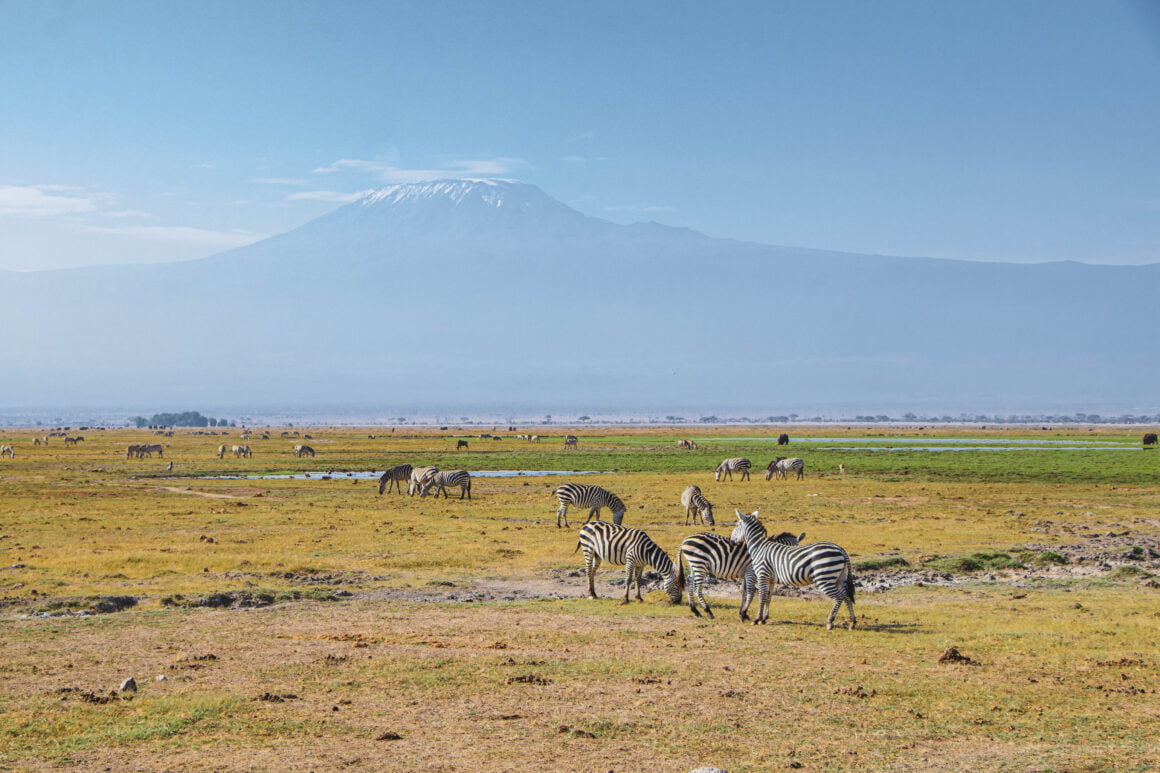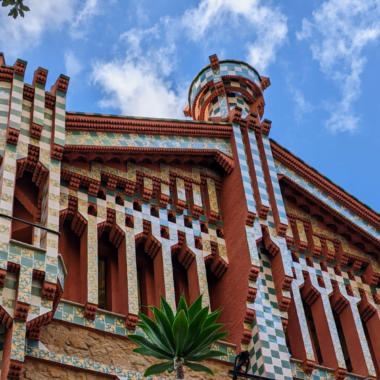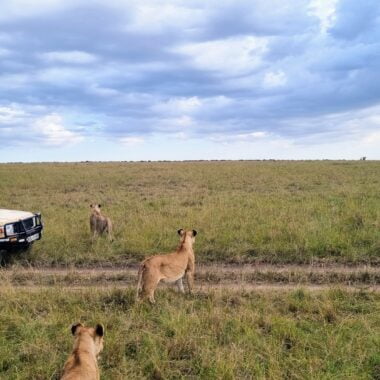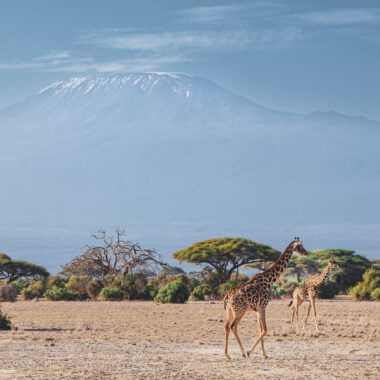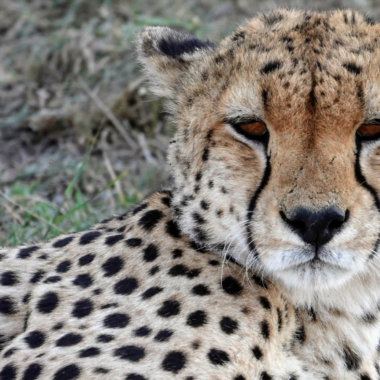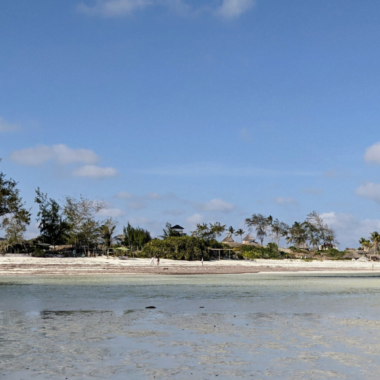For many, Kenya is synonymous with safari adventures. Lions, rhinos, elephants, wildebeests, and zebras roam in the hundreds, even thousands, across the country’s numerous natural reserves. Sometimes, they are spotted right at the outskirts of the capital, in Nairobi National Park. Beyond the safaris, Kenya offers a diverse tapestry of landscapes, a gateway to the Indian Ocean, and a rich cultural tapestry in its various regions. Explore below for all the practical information you need to plan your next trip to Kenya.
Article Summary
- Kenya in a Nutshell
- When is the best time to go on a safari in Kenya?
- How to get around in Kenya?
- Which park to choose for a safari in Kenya?
- What is the ideal duration for a safari in Kenya?
- Which accommodation is best to choose in Kenya?
- What budget is needed for a safari in Kenya?
- Safari in Kenya or Tanzania: Which destination to choose?
- Combining safaris and beach time: What are the most stunning beaches in Kenya?
Kenya in a Nutshell
- Location: Situated in East Africa and bordered by the Indian Ocean to the east, Kenya shares its boundaries with Somalia to the northeast, Ethiopia to the north, South Sudan to the northwest, Uganda to the west, and Tanzania to the south.
- Capital: Nairobi
- Population: Approximately 54 million inhabitants
- Official languages: Swahili and English
- Economy: The Kenyan economy is predominantly reliant on agriculture, tourism, and manufacturing industries. Safaris play a crucial role as a significant revenue source for the country.
- Currency Exchange: 1€ is approximately 143 KES in the Kenyan Schilling. US dollars are widely accepted in most places.
- Tips: $5 per table at a restaurant, $5 per person per day for lodge staff, $10 per day per person for rangers and trackers, $20 to $30 per day per couple/family for the driver-guide.
- Communication: Airtel and Safaricom are two local mobile phone companies.
- Time difference: +2 hours in winter and +1 hour in summer compared to Belgium and France.
- Flight Duration: On average, a flight lasts 8 hours. Brussels Airlines now offers direct flights from Brussels to Nairobi starting at 479€ for a round trip.
- Entry Requirements: A valid passport (with at least two blank pages) valid for 6 months from the date of arrival and an electronic travel authorisation to be requested within 90 days before departure ($32.50 per traveler).
- Health: No vaccines are required for travellers coming directly from Europe. However, travellers who have passed through sub-Saharan African or South American countries for more than 12 hours must provide a yellow fever vaccination certificate. Universal vaccines like DT-Polio, hepatitis A, and hepatitis B are highly recommended, as well as taking an antimalarial treatment.
- Pack these essentials in your suitcase: an adapter for type G electrical outlets (British plugs), a headlamp, binoculars, tropical insect repellent, sunscreen, and warm clothing for early mornings and cool evenings.
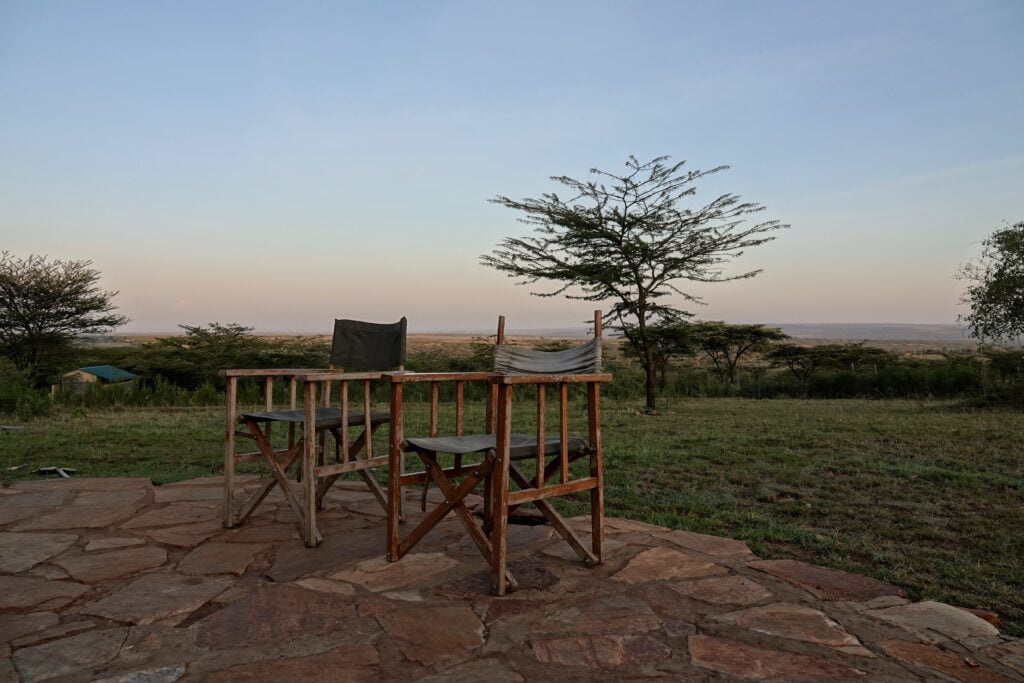
When is the best time to go on a safari in Kenya?
Situated along the equator and bordered by the Indian Ocean, Kenya enjoys consistent sunshine (with sunrise around 6:00-6:30 am and sunset around 6:30-7:00 pm year-round) and temperatures that can climb up to 40°C during the summer months.
In Kenya, there are distinct four well-defined seasons:
- Two significant dry seasons occur from December to March (summer season) and from July to October (winter season).
- Two rainy seasons occur, from April to June and from November to mid-December.
While Kenya offers safari opportunities year-round, the optimal time for a safari aligns with the dry seasons. During this period, the tracks are more accessible, the vegetation is less dense and towering, and the aridity prompts animals to gather around water sources, greatly enhancing their observability.
During the rainy season, landscapes flourish in lush greenery, and accommodation rates typically dip. However, heavy downpours can render many roads impassable.
The green season, spanning from November to June, marks a significant period of reproduction for numerous animals, making it easier to spot baby animals during this time.
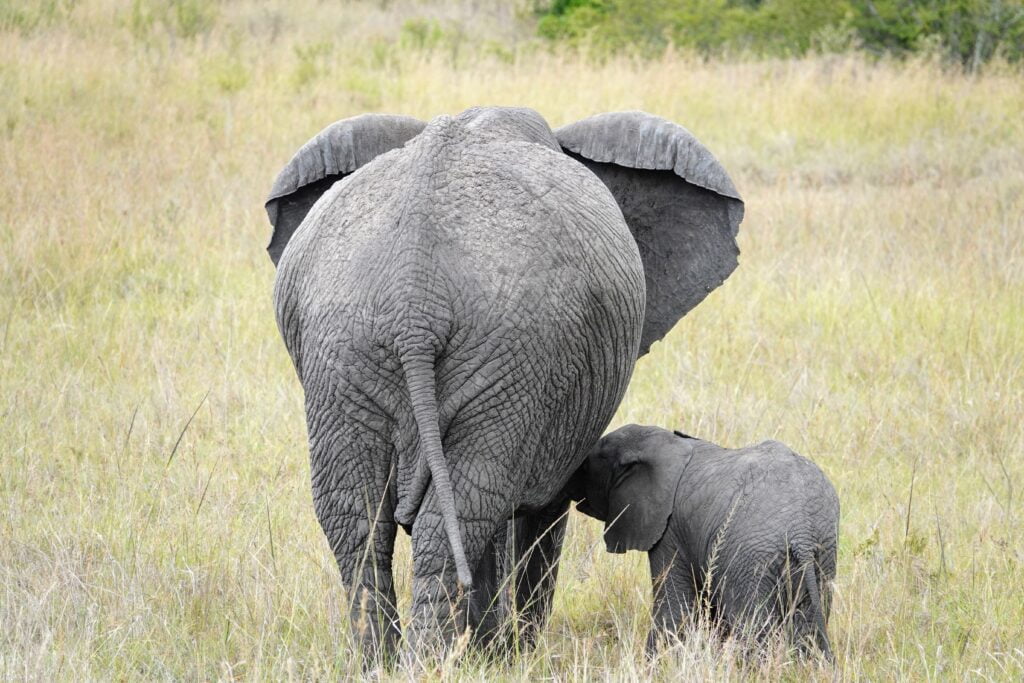
If you wish to witness the great migration of wildebeests and zebras in the Maasai Mara, it’s best to visit in August or September.
How to get around in Kenya?
Various modes of transportation can be considered based on your personal preferences, itinerary, and budget:
- Air Travel: For journeys between major cities and more distant destinations, airplanes offer a convenient albeit relatively costly option.
- Train: The new railway line connecting Nairobi and Mombasa (Madaraka Express) allows you to reach Mombasa in 5 hours and 30 minutes for just €6 per adult.
- Public Transportation: Buses are commonly used for long-distance travel between cities, while minibuses (matatus) are ideal for local commutes.
- Car Rental: Renting a car is likely the most favoured choice for exploring Kenya. When it comes to safaris, opting for a 4×4 vehicle rental is highly advised, ideally with a professional guide who not only handles the driving but also imparts valuable insights on the wildlife and vegetation.
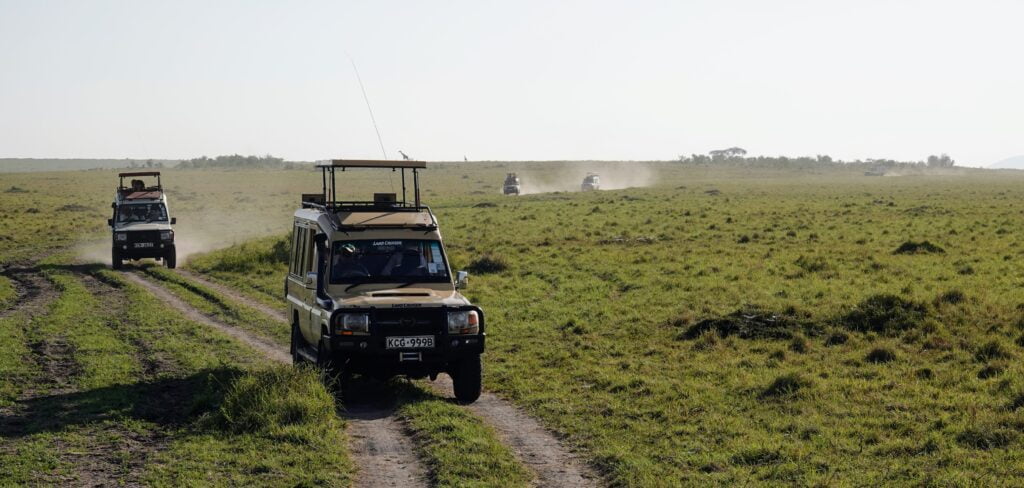
Which park to choose for a safari in Kenya?
Kenya is home to over fifty national parks and reserves, each boasting unique landscapes and wildlife. Selecting the right park for your Kenyan safari will hinge on your landscape preferences, desired wildlife encounters, and the type of experience you seek.
Here’s a brief overview of Kenya’s most iconic parks…
While less crowded than the Serengeti, it remains Kenya’s most popular reserve for safaris. It also ranks among the priciest, with a $100 daily entry fee for non-resident adults ($50 for children aged 9-17), set to increase to $200 per day from July 1, 2024.
Discover here all the details of a day in the Maasai Mara on safari!
Amboseli National Park is renowned for its expansive open plains, offering stunning views of the snow-capped Mount Kilimanjaro and its large population of elephants.
To read about our day of safari at Amboseli National Park, visit this link.
Compared to other parks in Kenya, Tsavo National Park receives fewer visitors, providing a more exclusive experience with a wilder atmosphere.
Located near Nairobi, the park is easily accessible, making it a popular choice for day safaris or short getaways.
Due to its remote location and lower tourist traffic compared to other national parks, the Samburu National Reserve provides a more exclusive and authentic experience.
For more details, check out our article on the various parks of Kenya.
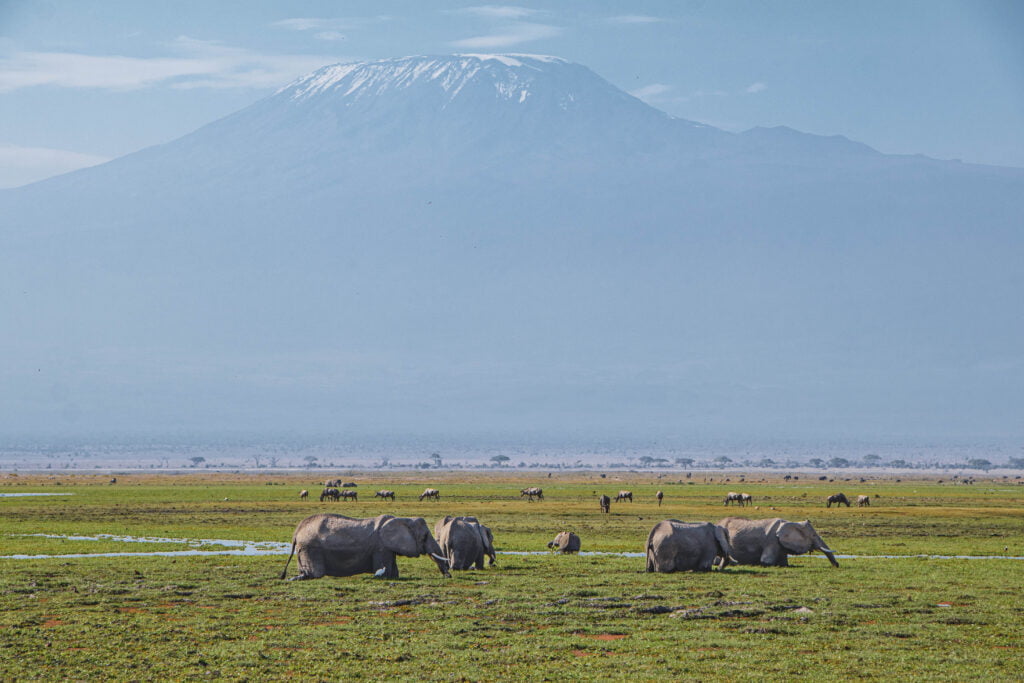
What is the ideal duration for a safari in Kenya?
The ideal duration for a safari in Kenya depends on your schedule, budget, and the parks you wish to visit. For instance, it is recommended to spend at least 3 days and 2 nights in the Maasai Mara Reserve, and 2 days and 1 night in Amboseli National Park. On average, travellers typically opt for 7 to 10 days for a safari-only trip and 10 to 15 days for a combination of beach and safari experiences.
Here are some itinerary suggestions:
- For a short stay of 2 to 4 days, consider visiting national parks or reserves near major cities, such as Nairobi National Park, Lake Nakuru National Park, or Amboseli National Park.
- A 5 to 7-day trip offers a chance to enhance your safari experience by visiting multiple parks or reserves like Maasai Mara Reserve, Lake Nakuru National Park (or Lake Naivasha), and Amboseli National Park.
- For an extended stay of 10 days or more, you can venture through various regions of the country and explore lesser-visited parks like Tsavo National Park and Samburu National Reserve.
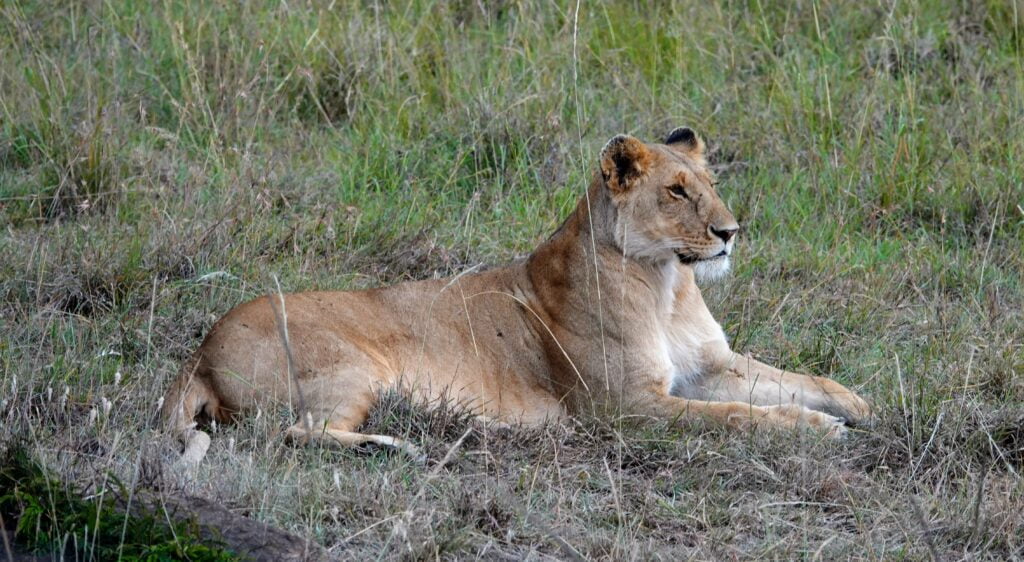
Which accommodation is best to choose in Kenya?
Accommodation options in Kenya are both extensive and diverse, ranging from rustic tented camps to luxurious lodges that provide privacy and comfort, away from mass tourism. Some of the most sought-after choices include:
- Luxury lodges: Often nestled within national parks or private reserves, these establishments boast breathtaking views of the surrounding wildlife and flora. They provide top-notch accommodation and services, including a pool, spa, gourmet restaurant, guided activities, and more.
- Luxury safari tents: Typically providing panoramic views of the surrounding nature, these tents feature cozy beds, private bathrooms with running water and electricity. Additionally, they offer various high-end services.
- Bush camps: Found in remote areas of parks or reserves, these camps offer a rustic yet comfortable experience with spacious tents, prepared meals, and guided activities.
- Affordable Accommodations: For those on tighter budgets, there are more economical lodging options such as guesthouses, hostels, or base camps, located at various distances from national parks.
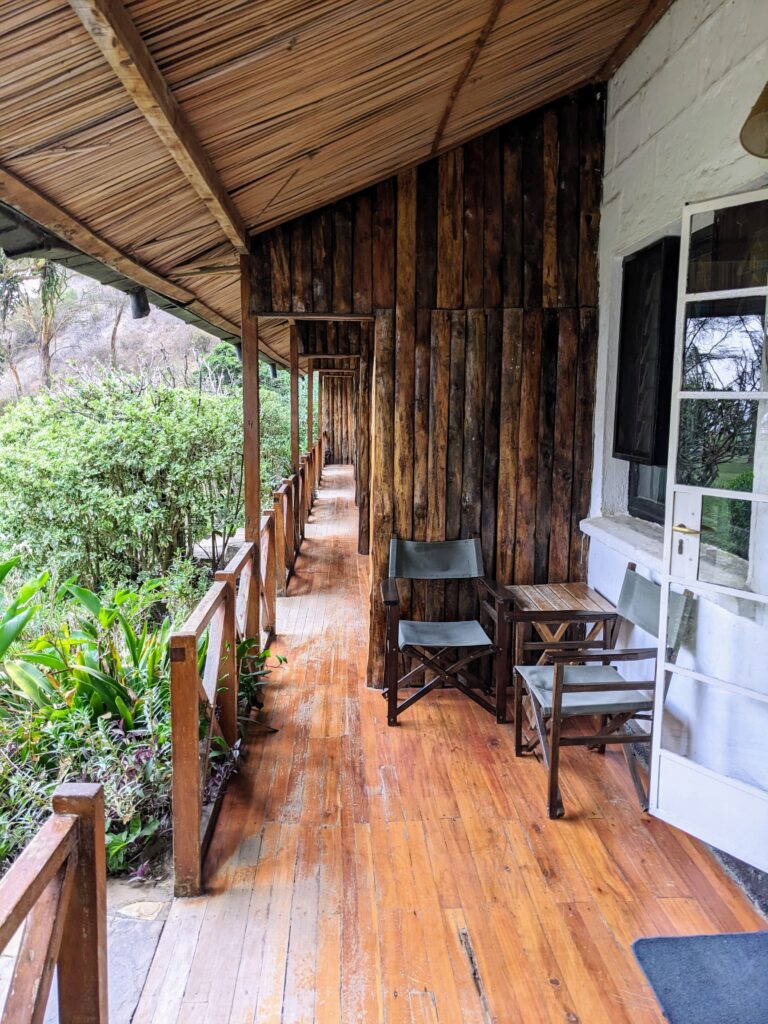
What budget is needed for a safari in Kenya?
The cost of a safari in Kenya can vary depending on several factors, including the safari’s duration, travel season, number of parks visited, and chosen accommodation type.
Here is an overview of the key costs to consider:
- Air Travel: The cost of international flights varies based on your departure location and booking timing. Typically, expect to pay between 500€ and 800€ for a round-trip flight from Brussels or Paris.
- Travel Costs: Depending on the car type and selected services (with or without a driver-guide), rental prices range from €60 to €150 per day. Meanwhile, an internal flight from Nairobi to the Maasai Mara will cost between €150 and €300.
- Park Entry Fees: Entrance fees and conservation costs vary based on the park and safari duration. On average, expect to pay between 50€ to 75€ per person per day. For further information, please visit here.
- Accommodation: Kenya provides a diverse range of lodging options, from basic camps to luxurious lodges. Prices vary accordingly, with rates starting at €65 per night for a 3-star hotel and €150 per night for a 4-star lodge. In most instances, the rates are inclusive of full board.
- Tipping Etiquette: It is customary to tip guides, drivers, and lodge staff. Plan for a budget of approximately 5 to 10% of your total safari cost.
Depending on the desired level of luxury and exclusivity, the cost of a safari can range from 200€ to 600€ per person per day for a tailor-made luxury safari, excluding airfare.
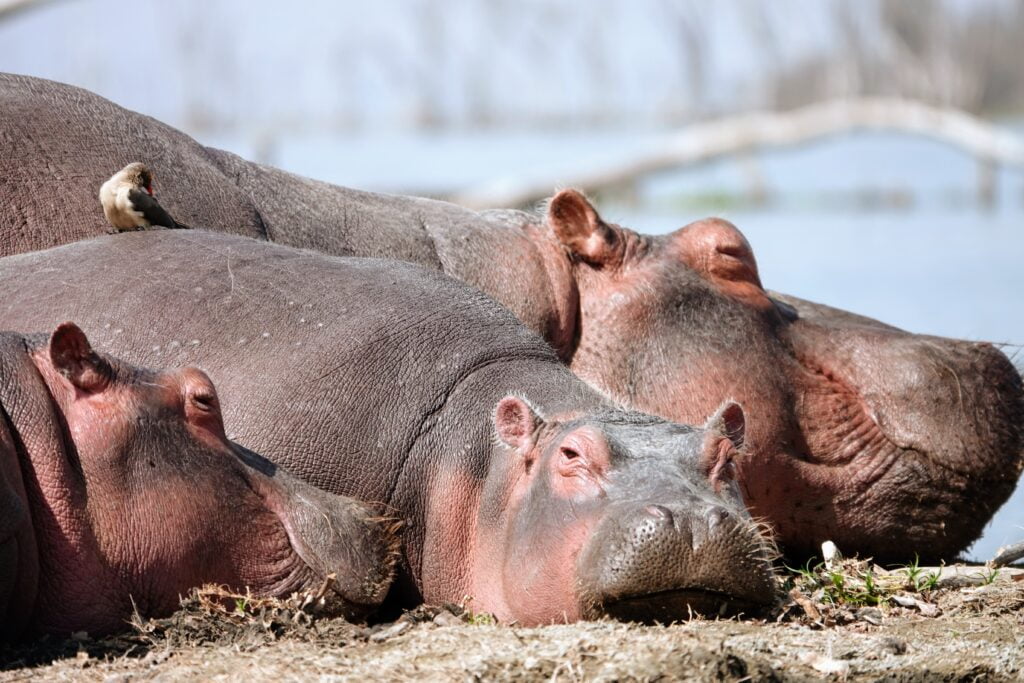
Safari in Kenya or Tanzania: Which destination to choose?
Dreaming of embarking on a safari through the stunning wildlife parks of East Africa, but torn between Kenya and Tanzania? Let’s weigh the factors to consider when making your decision: budget, time of year, accommodation type, and more.
- Countries and parks with the highest footfall: Historically, Kenya delved into tourism long before Tanzania did. Consequently, a larger number of safari enthusiasts are typically spotted in Kenya.
- Travel Time: In Kenya, parks and reserves are quite distant from each other. Consequently, a significant amount of time is spent on the road, which can pose a challenge for time-pressed travellers. In Tanzania, the northern parks are closely situated and easily reachable from Arusha, enabling travellers to maximise wildlife and flora observation opportunities.
- Climate: Since the climate in Tanzania and Kenya is quite similar, the dry season from June to October is perfect for organizing a safari there.
- Animals: The wildlife density is equivalent in Tanzania and Kenya. Leopards inhabit numerous parks and reserves in both countries but are elusive and hard to spot. Lions reign in the Serengeti and Maasai Mara, while Amboseli in Kenya and Tarangire in Tanzania are renowned as the realms of elephants.
- Budget-wise, a safari in Kenya typically offers a better value proposition. This is because airfares to Kenya are often more affordable than those to Tanzania, accommodation choices are more diverse in Kenya (though Tanzania’s are of a higher standard), and the cost of living is higher in Tanzania.
Combining safaris and beach time: What are the most stunning beaches in Kenya?
If you’d like to end your safari with a relaxing beach getaway, the Kenyan coast boasts stunning beaches with white sands, turquoise waters, and remarkable marine life.
Most often reachable by plane from Nairobi or Mombasa, here are some of Kenya’s most stunning beaches:
- Diani Beach, located south of Mombasa, is renowned for its miles of white sandy shores fringed with palm trees. It stands as one of the most exquisite beaches along the Indian Ocean and is a highly sought-after destination in Kenya.
- Tiwi Beach: Located just north of Diani Beach, Tiwi is a tranquil shoreline gem, away from the usual tourist paths. During high tide, its turquoise lagoon presents one of the most delightful swimming spots along the entire coast.
- Malindi Beach: Nestled on the north coast of Mombasa, Malindi Beach stands as Kenya’s second most popular and vibrant coastal resort. A beloved destination for beach enthusiasts, Malindi is also renowned for being one of Kenya’s premier surfing spots.
- Watamu Beach, located near Malindi, is renowned for its pristine coral reefs and exceptional marine biodiversity. This idyllic beach stretches alongside a quaint fishing village and stands out as one of the top three nesting areas for sea turtles in Kenya.
- Lamu: Off the northern coast lies Lamu Island, part of the Lamu Archipelago, known as the “Little Zanzibar.” It presents a unique blend of pristine beaches, traditional Swahili villages, and a timeless atmosphere. Stepping away from mass tourism, Lamu’s old town reflects the influence of Arab, Indian, and European civilizations intermingled over 700 years in its organization and architecture.


